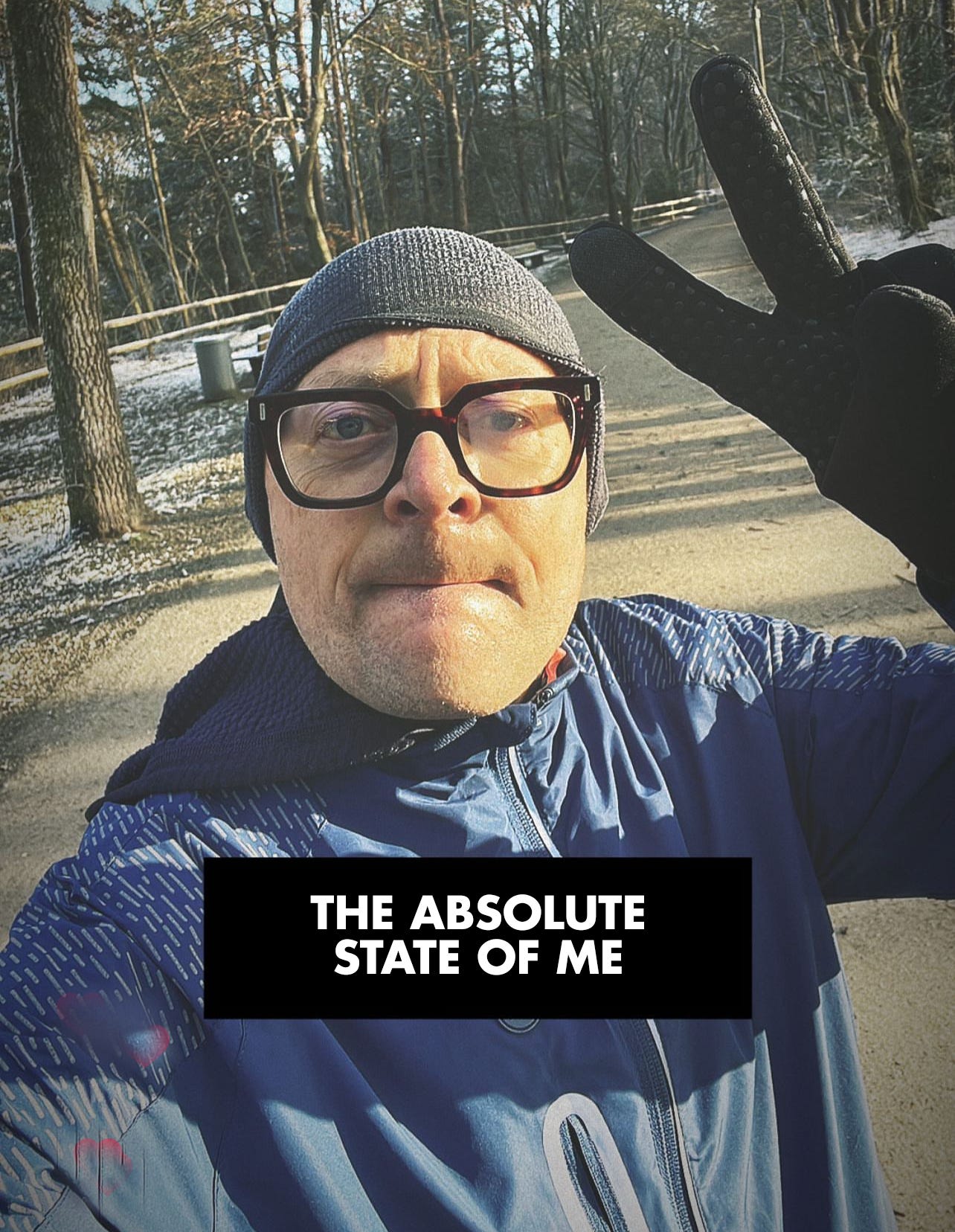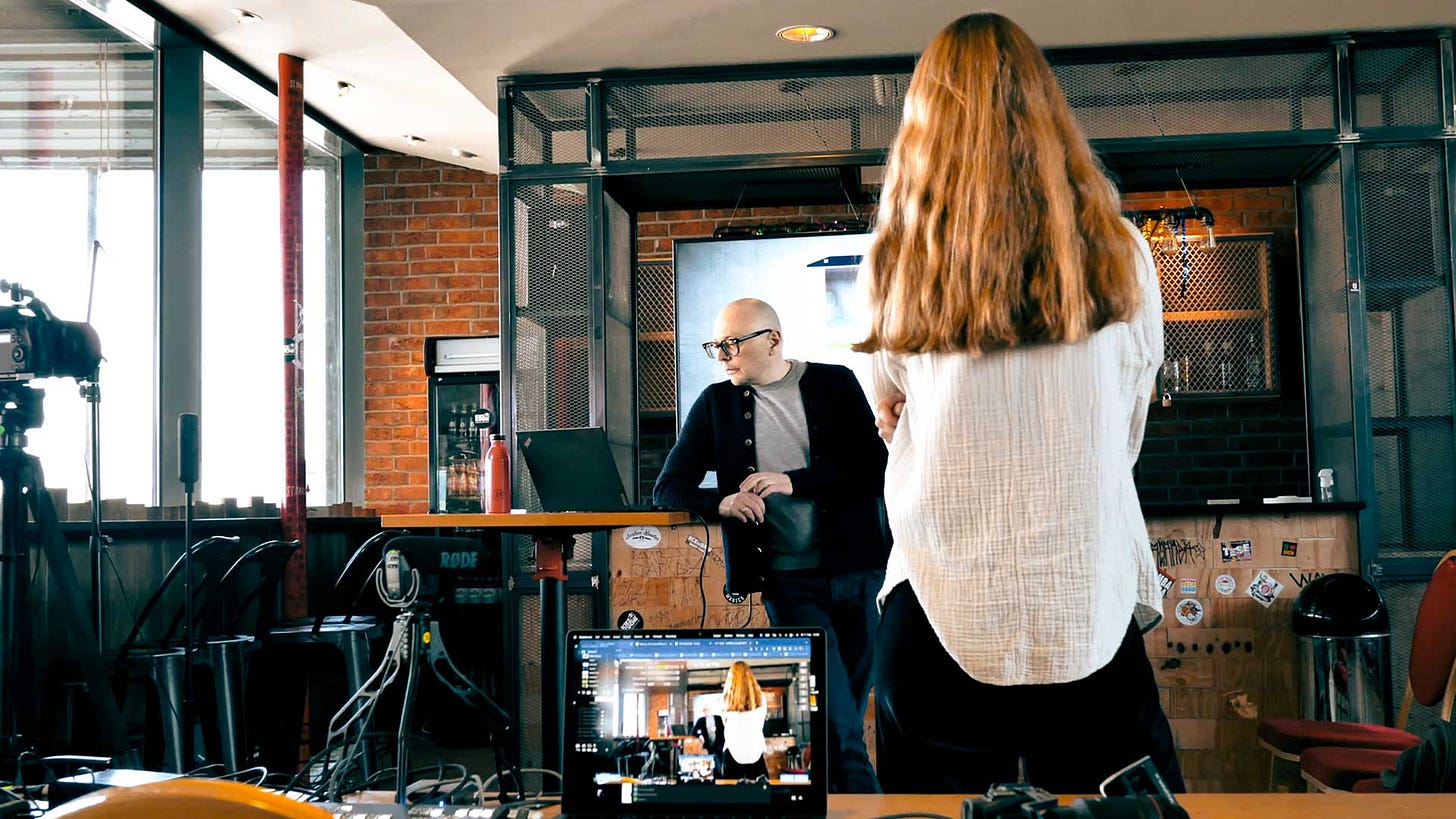On Another Level
You recently started running again. You couldn't fit into the suit you need to wear in order to perform The Passing, so you started running. This has been a new experience but oddly similar to how you approach honing your presentation skills. Here are ten observations.
Getting started is the hardest part.
You used to run, but then you stopped. You ran 10km, and then you didn't run at all. Your left knee became an excuse, as did the wine, the pizza and the pandemic blues. "You should start running again", your wife told you, but the bed was soOOOooo warm, and YouTube shorts were a fun waste of time. But you kicked yourself up the arse and finally put on those running shoes. You knew it would do you good. You knew it would take a while to get back up to speed, rebuild the muscle, and feel comfortable on the road.
There are many reasons and excuses why we don't do difficult or time-consuming things: we're too busy, too tired, too bad or even too good to do something like practise a presentation. Deciding to do it, and to do it regularly, is the hardest part of the learning process. Get out of bed. Presenting is the hardest soft skill that nobody taught us. And yet, we need to learn how to do it. It’s a critical part of our business life. Let’s start taking it seriously. Just do it. Amazing things happen when we do.Warming up is important.
You warm up before every run. This is new. You're over 50, and your ankles ache, as do your hamstrings. Instagram thinks your hips are tight - and they're right; they're so damn tight. So you warm up, and because you do, your runs are better. It's embarrassing. You feel foolish. But it works.
It's also important to warm up before a presentation: we need to warm up our voices, bodies and minds. Shake ourselves down, pretend to chew chewing gum or bang ourselves on the chests and chant-like Mark Hanna. Warm up, people! Let’s make fools of ourselves in the wings before we make fools of ourselves onstage for the whole world to see.There is a Happy Place.
Warming up means starting at running speed and reaching The Happy Place faster. You've come to terms with the fact that the first 1.5km are horrible - this is Your Place Of Struggle. It used to be 2.5km, but you're stronger now, and warm up before you run. But break through the place of struggle, and you run into the warmth and glow of The Happy Place, where legs, guts, mind and lungs are aligned; you've found your pace. This is The Happy Place.
There's a happy place in our presentations, too - a place where our nerves settle and we've hit our stride, our confidence is high, and we’re at one with the deck and our audience. Warm up, train, practise and get ourselves there quicker - we don't want our audience to see our place of struggle; looking at us panting, stumbling, and moaning, no - we start our presentations in the happy place.Watching other runners helps.
You've started watching running-related videos on Instagram. You've picked up tips and tricks and noticed that they're helping. You're improving. You're building a library of running knowledge, and you've started watching other runners when you're out and about. You appreciate skill and technique now when you see it. You make mental notes of things you want to use on your next run. We’ll watch other speakers when we talk at the next conference, and we won’t hide away in the green room. We’ll watch our colleagues when they present; we won't read emails or flick through our presentations. We’ll watch them and make mental notes of what works. We’ll have some respect. Do the research. We’ll watch and learn from the competition. We’ll steal technique. We’ll discover ambition.Adversity is awesome.
You've learned to enjoy running in the wind, rain and snow. Adversity fills your heart with joy and your legs with power. The harder the rain, the better the run. Hard is fun when it's over and done, and pushing forward and being out there when everybody else is safe and dry feels incredible. It feels heroic.
Easy audiences are easy, but the difficult audiences that hate us, don't want us, don't want to hear or see us; well, they're the kind of audiences we thrive on. We don't fear the demanding audiences; we adapt to them. We embrace them. We don't fight them. We play them.Understand that you decide.
It's just you out there. Nobody else. Just you, your legs, your lungs and your chosen path. You decided to go for a run today. You decided how far you wanted to run. You chose how fast you wanted to run. You could've stopped at any time, but you carried on - it was up to you. You decide if you want to warm up or train properly. You set the goals. You decide how good you want to be when you put on your shoes and tie up those laces, not the passers-by out for a stroll and not the other runners.
We decide how good we want to be when we pick up the clicker and stand in front of the audience: not our bosses, not our clients and not our colleagues. We decide. It's on us. No excuses.There are zones, and you can master them.
You have a watch. A Garmin. It tells you things about your running, things you didn't know or understand, but because you're now interested in running and want to get better at running, you now know what the data means. You've discovered zones. There are five zones. Your pulse is low in zone one. It's off the charts in zone five. You're currently aiming for zone three and four.
There are zones in presentations, too, but these zones aren't powered by the pace of our hearts; they're powered by the pace of our stories - we aim for zones three and four here too. One “zone five” slide, but no more. Get the pacing right, and we can control the pulse of our audience. We listen to the rhythm of our presentations and discover what it does to our hearts.It's not a race.
Mate, you're not a great runner. There are people way faster, fitter and more skilled at running than you. That being said, you overtake people too. OK, old people, but you overtake them. No, you're not a great runner, but you are a runner. You're out there putting one foot in front of the other three days a week. Regardless of the weather and what's in your calendar, you're out there running. Sometimes running slow and sometimes running fast.
We may not think we're great at presenting, but if we stand in front of people, clicker in hand and with the rückenwind of PowerPoint behind us, well, then we are a speakers, and no one can take that away from us. We're walking the talk, and even though this isn't a race, we win every time we do it because doing is training.Training is important.
You're rubbish at running until you're not. You thought you would die when you used "Couch to 5k" for the first time and ran for six minutes. Now you run for forty minutes without a break. Your running improves with every run. The problem is that you never really notice until you break a personal record or the run was so easy you could have gone on for hours. Every run is a practise run: a training run, but it is a run. You may not be the best runner amongst the runners who train, but you sure as hell are a better runner than somebody who doesn't.
We practise presenting, rehearse our keynotes, memorise our speeches and be better than all those who don't - and there are a lot of people who don't.This is a journey.
This is the truth about your running and presenting skills: you're currently as good as you are. Congratulations! You're better than you used to be! But…commiserations! You're presently shit compared to the awesome you'll be next week. There'll be hiccups, shit runs, and injuries. You'll reach personal bests; run further and faster than you ever thought possible. You were a beginner, but now you're a borderline intermediate. You aspire to come close to what you believe a champion is. And when you get there, you'll discover new things to learn, set new goals, fail, make a fool of yourself and, consequently, become a beginner once more. And the journey begins again - as a runner and as a speaker - the journey continues but on another level.
The Speakery Survey
I’m currently running a survey about presentation skills. You can find it here. It only takes a couple of minutes to fill out. I’ll be posting the results of the survey during May 2023 here in the newsletter.
Many thanks for reading. Until next time!
Much love,
Marcus.





